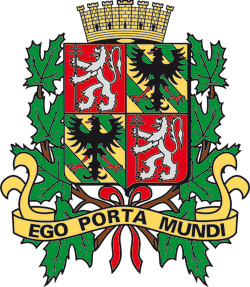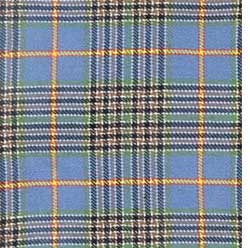Personal information and confidentiality policy
This site uses cookies to optimize your browsing experience and track how you interact with it. By clicking "I accept", you consent to the use of these cookies. For more details on how we handle this information, see our confidentiality policy.
Administration and Finance
Democratic Life
Citizen Information
Residents
Online Services
Businesses
Community Life
Environment
Urban Infrastructure
Sport and Leisure Activities

L’adresse URL a bien été copiée dans votre presse-papier.
History of Dorval

The history of Dorval dates back more than 300 years to 1667 when Sulpician priests established a mission on the outskirts of what was then called Ville-Marie.
The mission, originally named “Gentilly”, was later renamed “La Présentation de la Vierge Marie” and finally “Dorval”, which was incorporated as a village in 1892, as a town in 1903, as a city in 1956, became a borough of Montreal in 2002, and a city again in 2006.
As with many other settlements on the Island of Montreal, the railroad, which came to Dorval in 1855, was highly instrumental in attracting many wealthier families, mostly English-speaking, in search of a summer refuge in proximity to their downtown residence and place of work. From 12,853 residents in 1955, Dorval numbers are today more than 19,000.
Dorval is located on the south-west portion of the Island of Montreal, along the shores of Lake St.Louis. Its numerous parks, green spaces, and elaborate recreational facilities, coupled with a community life that is second to none, provide residents with an enviable environment. As a people-oriented City, Dorval meets the needs and expectations of its residents with a complete range of services and activities as well as an outstanding quality of life which make it a “great place to live and work.”
Dorval enjoys a diversified economy as evidenced by its various types of commercial and industrial establishments. The dominant feature of the City remains the Pierre-Elliott-Trudeau International Airport, which gives Dorval a definite edge in terms of economic development. From airport city and former residential suburb, the City has become, over the years, the meeting place of more than 25,000 people who come daily to work for the many firms located in its strategically located industrial parks.
Sister Cities
In 1957, Dorval Mayor John Pratt signed a declaration to twin the City of Dorval and the Town of Oakville, making them sister cities.
This friendship association between the two cities declares the Mayor and the Councillors of the Town of Oakville honorary members of the council of the City of Dorval, and all citizens of the Town of Oakville honorary citizens of the City of Dorval.
Coat of Arms
Coat of Arms

In 1668, Father François Salignac de Fénelon founded a school and a mission on the actual site of our City. This first mission was called “La Présentation”. Father Fénelon was from a noble family whose insignia bore an eagle. On the City of Dorval’s crest, the eagle was introduced symbolically. In fact, it represents in a heraldic fashion the Dorval airport. It is the emblem of strength, majesty and power. Three green stripes on a golden background symbolize loyalty, generosity and glory. As for the patriarchal cross, it represents the emblem of Christianity. Finally, the silver lion comes from the family crest of Pierre Le Gardeur de Repentigny, the husband of Agathe de Saint-Père.
In 1685, the Sulpicians conceded the domain “La Presentation” to Agathe de Saint-Père. After she sold “La Presentation”, she became the first linen and cloth manufacturer of Canada. She also created and introduced maple sugar in France.
In 1691, she conceded the domain “La Présentation” to Jean-Baptiste Bouchard dit d’Orval, a voyageur and fur-trader who eventually made history by passing on his name to the City of Dorval. His father had added to his name the word “d’Orval”, which was the name of a small hamlet where he was born in Aisne, a province of Île-de-France. That is the reason for the French crown that dominates the City crest. This crown was stylized to represent a fortification such as the Fort of “La Présentation”.
The maple leaves represent our great country, Canada. Green is the colour of nature, youth and optimism. The leaves are held by a red bow, red being symbolic of justice, courage, heroism and strength while serving just causes.
The latin moto means: “I am the door to the world”. This saying complements the eagle, king of the skies. It brings to mind the Dorval airport activity.
Tartan

The official tartan of the City of Dorval, created by the Dorval Weavers' Guild, was unveiled on February 12, 2010, at the Dorval Museum of Local History and Heritage. The tartan has also been registered in Scotland with the Scottish Register of Tartans. The design was inspired by the City’s coat of arms, and the selected colours reflect Dorval's history, geography, beautiful surroundings, and its joie de vivre.
In 1667 the Sulpicians, lords of the island of Montreal, established a mission on the southwest side of the island, the present day site of the City of Dorval. This mission was located on the shores of Lake Saint Louis, an integral part of the mighty Saint Lawrence River. The river was, and remains, an important seaway used first by the Amerindians in their bark canoes, then by the French colonists, followed by the British colonists after the defeat of the French in 1789, and today by a fleet of lakers and numerous pleasure craft. When the priests and French colonists arrived, the area had already been occupied for centuries by the First Nations. In 1670, the Sulpicians built a fort and the domain took on the name of Fort de la Présentation1.
In 1685, the Sulpicians ceded the domain to Agathe de Saint-Perre who, in 1691 sold the concession to Jean-Baptiste Bouchard dit d’Orval, a voyageur and fur-trader who eventually made history by passing on his name to the City of Dorval.
With the coming of the railway in 1851, Dorval entered the modern era. Among other things, the railway brought to the region a wealthy, influential Montreal bourgeoisie seeking a summer holiday retreat. Many of these families were Scottish or of Scottish descent. Their arrival would have a lasting impact on the social and political fabric of Dorval.
In 1941 the Dorval Airport was officially opened in order to serve as the headquarters of the Royal Air Force Ferry Command whose mission was to fly airplanes to the United Kingdom in support of the Allied Forces. More than 9,000 planes were deployed between 1941 and 1945.
After the Second World War the airport would become what is now the Montreal-Trudeau International Airport, attracting more than 25,000 people a day from all corners of the world. Nevertheless, Dorval is proud to be, first and foremost, a verdant residential city endowed with many parks and waterfront walkways.
The creation of the tartan was based on the history, the geography, and the coat of arms of the City.
- The yellow/gold border represents the Fort de La Présentation and honours Sieur Bouchard dit d’Orval and all others who contributed to the evolution of Dorval.
- The blue reflects the colour of Lac Saint-Louis and the St. Lawrence Seaway. It also illuminates our affiliation with Quebec.
- The brown pays tribute to the Amerindians and recalls the bark of their canoes.
- The black stands for the transportation system for which Dorval is a hub: airport, railways and highways.
- The green evokes the parks and gardens that have replaced the farms of the first settlers and that give Dorval its charm and reputation.
- The red shows Dorval’s allegiance to Canada.
- The white is a reflection of the silver in the coat of arms.
- The heart of the tartan’s design embodies the City’s motto “Ego Porta Mundi” meaning “I am the Door of the World”.
1 It should be noted that this “fort”, if indeed there was a fort, was probably not more than a small parcel of land surrounded by a palisade of wooden stakes anchored in the ground. The presence of this fort is recognized by some historians and refuted by others. However we are relying on the records of Désiré Girouard, a lawyer, renowned historian, first mayor of Dorval in 1892 and a judge of the Supreme Court of Canada.
Archives
Since its founding in 1892, Dorval has created, received, and stored documents. Our archives are available to anyone wanting to consult them but exclusively in the archive room at the City Hall. All you need to do is to schedule an appointment, mention the research subject, and obey certain rules once on site. For a fee, a document can be photocopied if its condition allows. It is also possible to make an information request by phone, fax or e-mail. These requests must be clear and simple. Failing that, residents will be asked to come make the research themselves.
Information
Telephone: 514 633-4074
